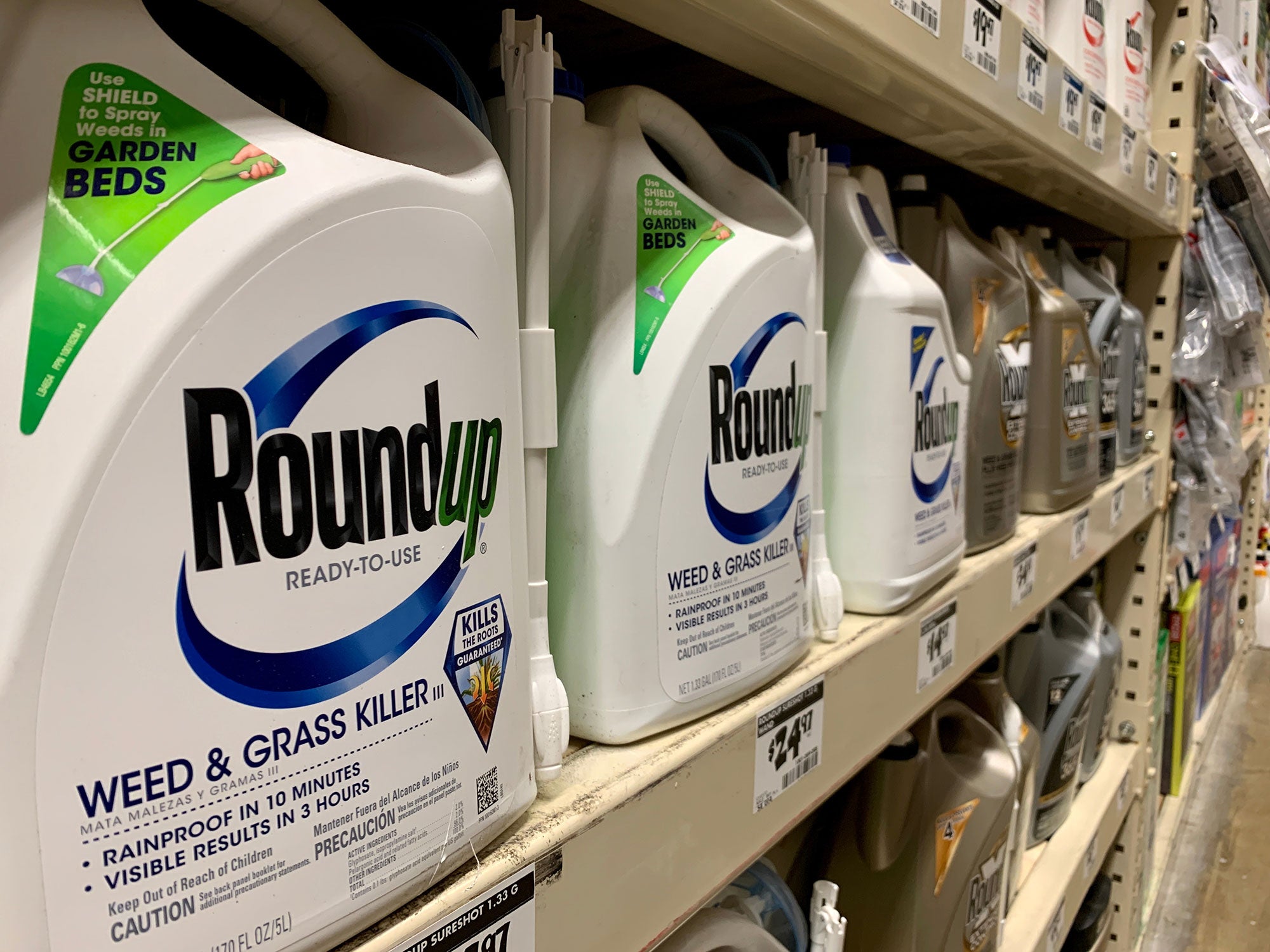A neurodegenerative-disease scientist from Arizona State University has released a study looking at the lasting effects of glyphosate on brain health. His findings show that this herbicidal active ingredient could lead to “significant brain inflammation, and increase the risk of neurodegenerative disease and Alzheimer’s-like effects.”
The study was published Wednesday in the peer-reviewed Journal of Neuroinflammation.
“Our work contributes to the growing literature highlighting the brain’s vulnerability to glyphosate,” said the lead scientist and co-author, Ramon Velazquez. “Given the increasing incidence of cognitive decline in the aging population, particularly in rural communities where exposure to glyphosate is more common due to large-scale farming, there is an urgent need for more basic research on the effects of this herbicide.”
Yet despite Velazquez pointing out that even brief exposure to glyphosate can cause lasting damage to the brain, the results of his work are probably less meaningful in everyday circumstances than any research buzz would have people believe. That’s partly because the study authors dosed the treatment groups at far more extreme levels than is ever seen in real-world situations.
“We dosed 4.5-month-old 3xTg-AD and non-transgenic (NonTg) control mice with either 0, 50 or 500 mg/kg of glyphosate daily for 13 weeks followed by a 6-month recovery period,” the study said.
Glyphosate — which is the active ingredient in herbicides such as RoundUp, CallistoGT, Rodeo Aquatic, and Eraser — has an LD50 of 4,900 mg/kg, making it less toxic than common products such as salt and vinegar. And it is readily excreted in urine and doesn’t bioaccumulate in the body.
Scientists took to social media (dedicated threads in r/farming and r/science, for example) to explain the scale used in the research versus the allowable amounts by the U.S. Environmental Protection Agency. That federal agency has determined the acceptable limit for glyphosate on food to be 1 milligram per kilogram of body weight per day. The trace amounts recently found in foods (~0.02 milligrams per serving) are well below the EPA’s acceptable limit. That means an average person weighing 65 kilograms (143 pounds) would have to eat 430 pounds of oats a day to surpass the safe threshold.
“So for the treatments used in this study, the lowest group is still already 50x higher than the maximum amount allowed by EPA and 2500x higher than what’s typically found in food mentioned in that same sentence,” noted u/braconidae, who identified themself as a university agricultural scientist who teaches on pesticide safety. “These mice were practically force fed glyphosate to the point the study was not realistic or ecologically relevant dosage. Now sometimes when we do pesticide bioassays we go higher to force an effect, but to go from nothing to an extremely high concentration without any intermediate concentrations is a pretty serious red flag.”

Velazquez’s paper defends against this argument by stating that researchers tested two levels of glyphosate exposure: a high dose, similar to levels used in earlier research, and a lower dose that is close to the limit used to establish the current acceptable dose in humans. Furthermore, the scientists claim they discovered these symptoms persisted long after a six-month recovery period in which exposure was discontinued. They also said that the lower dose still led to harmful effects in the brains of mice, even after exposure ceased for months.
Many critics of the study state that feeding anything — even water — at levels so far above acceptable safe doses (and for so long) would have severe impacts on brain and body function.
Arizona State specifically notes in media materials that studies such as this “may change that perception and raise questions about existing safety thresholds, and whether glyphosate use is safe at all.” It also says that the new findings suggest that ingestion of glyphosate residues on foods sprayed with the herbicide potentially poses a health hazard.
According to the Centers for Disease Research, farm laborers, landscape workers, and others employed in agriculture are more likely to be exposed to glyphosate through inhalation or skin contact.
Glyphosate is clearly a hot-button topic and, too often, a legally lucrative “boogeyman” for lawyers looking for a quick payday. Bayer, the company that acquired glyphosate-creator Monsanto and thus took on the burden of thousands of herbicide-related lawsuits, has paid out billions of dollars already related to court decisions and settlements. It went so far as Bayer considering a bankruptcy filing earlier this year to address the financial toll, even as the company begins to turn the legal tide and win more and more cases.
Glyphosate is one of the most-studied herbicides in history, and nearly all scientific bodies and associated research have affirmed the safety of glyphosate.
“My hope is that our work drives further investigation into the effects of glyphosate exposure, which may lead to a reexamination of its long-term safety and perhaps spark discussion about other prevalent toxins in our environment that may affect the brain,” said Samantha Bartholomew, an ASU Ph.D. candidate and first author on the paper.

ASU has a long history of looking into glyphosate exposure and researching connections to neurodegenerative disorders. One earlier study they did showed that glyphosate was able to cross the blood-brain barrier, a protective layer that typically prevents potentially harmful substances from entering the brain.
The EPA says that about 280 million pounds of glyphosate are applied to crop land annually — which doesn’t even factor the numbers from home use of the herbicide.
“Of the pesticides I’m actually worried about whether it’s in my extension role or doing actual farm work, glyphosate is not one of them when it comes to safety,” remarked u/braconidae.


